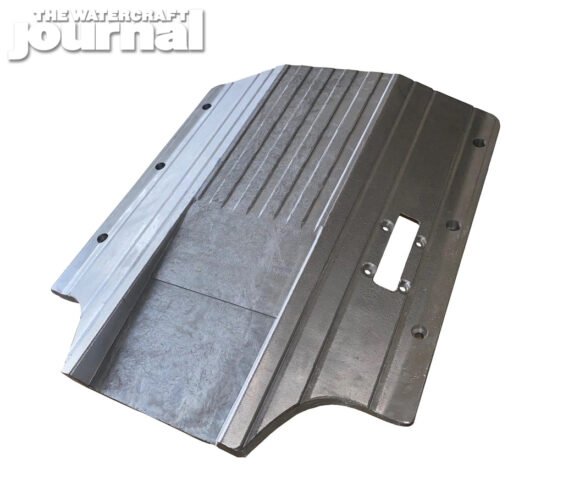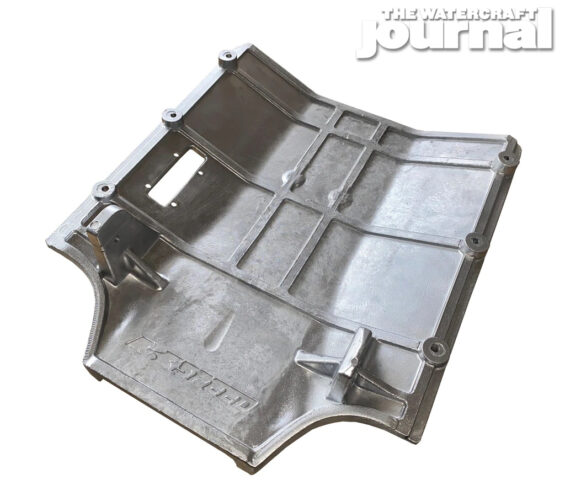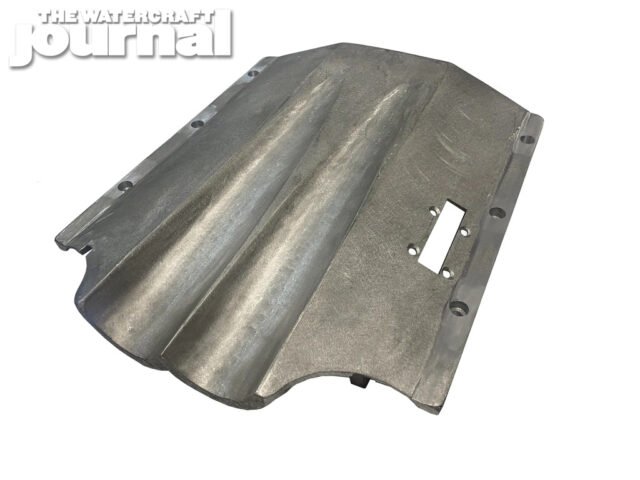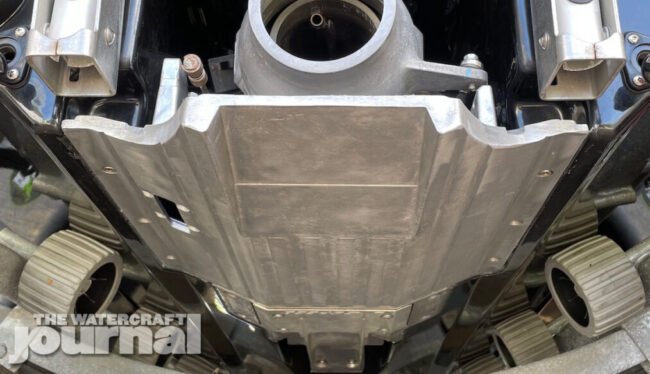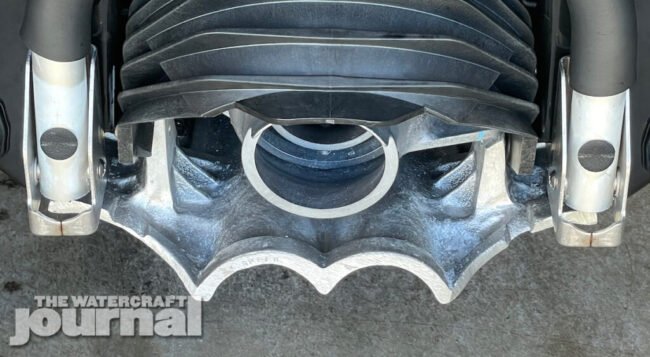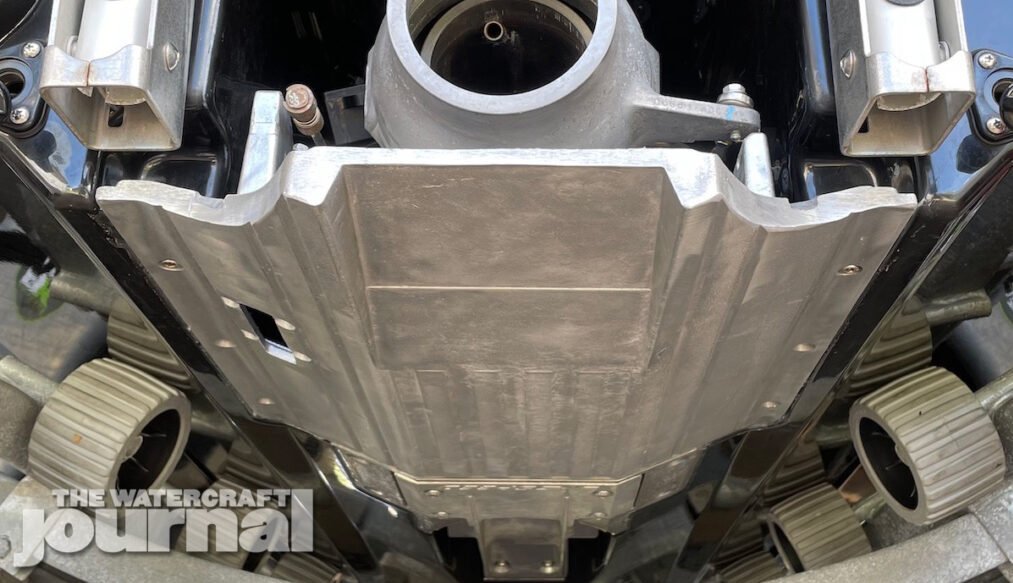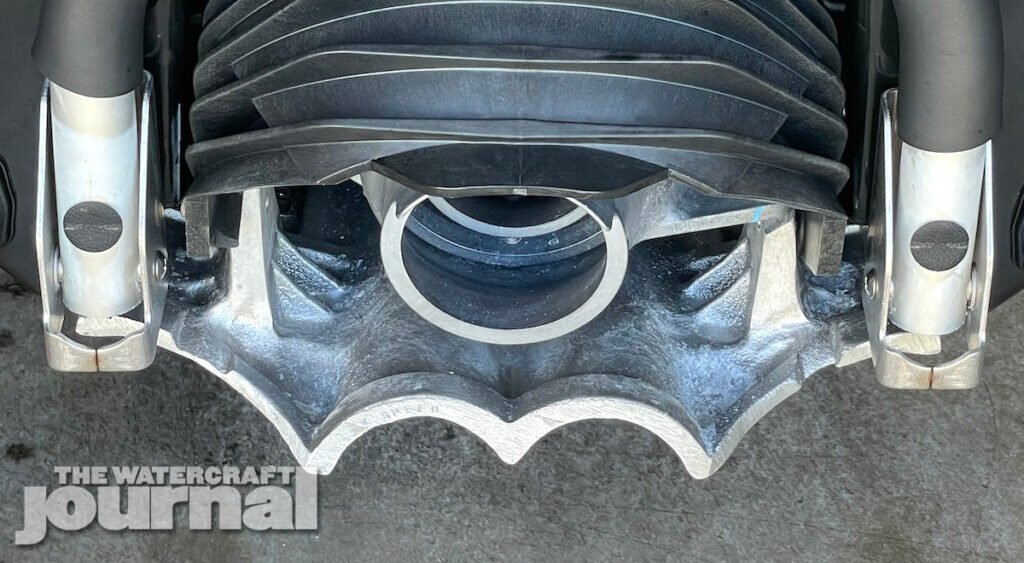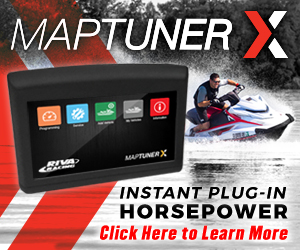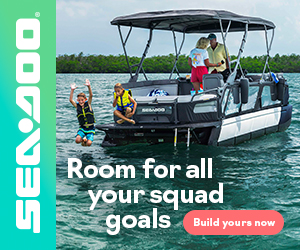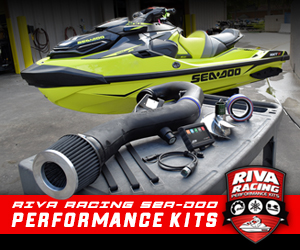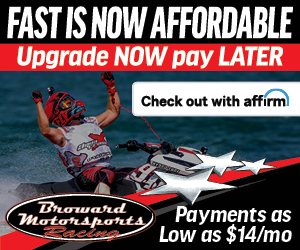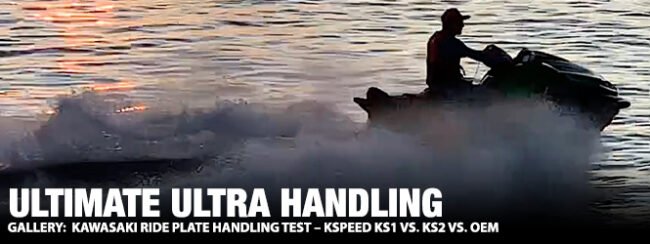
Over the last decade the Kawasaki Ultra 300 and 310 models have widely been considered the best rough water PWC. This well deserved reputation is primarily due to the tough fiberglass 22.5-degree true deep-V hull that cuts through the waves – rather than crashing over the top. The big Kawasakis boast the most powerful engine of all production PWC, and also the heaviest weight. That weight adds to the ability of the machine to cut through the waves, but it does come at the cost of agility and speed.
A key factor in jet ski speed and handling is the ride plate. The shape, contour and dimensions of a ride plate contribute to the performance of the PWC. In this regard, Kspeed Performance has largely cornered the Kawasaki aftermarket, and the company recently released two very different plates for the Ultras, both of which we comprehensively tested – both to each other and the factory Kawasaki plate.
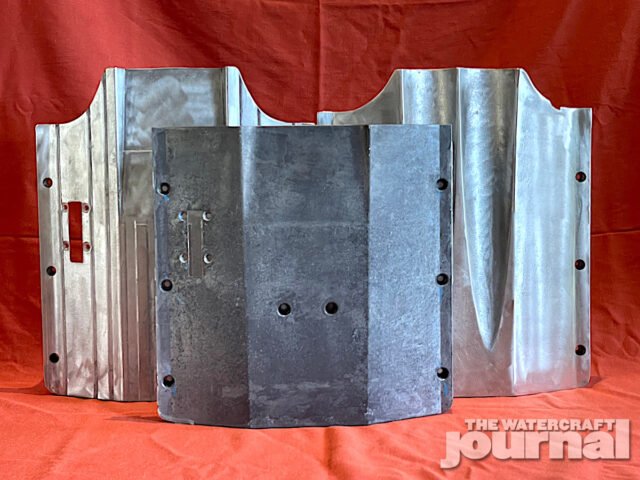
Developed as part of the Kspeed racing program, the KS1 and KS2 ride plates were created for different purposes – the KS1 Race Spec ride plate is a high performance all rounder as the KS2 Offshore ride plate has, as the name suggests, a rough water/offshore-specific design. These plates will fit all Ultras (LXs, 250, 260, 300, and 310s) from 2007 to 2021. Both have slots for the factory speedometer wheel and require zero modifications to install.
All three plates differ greatly; both of the Kspeed plates extend the hull’s running surface and feature an angled pitch or ramp to the extension. Unlike the factory plate, neither of the Kspeed ride plates have central bolt holes for the rear of the jet pump housing.
The KS1 ride plate has a profile reminiscent of the standard plate, but with some fundamental differences. Three distinct channels run the length of each side with five shallow channels running down the center. The extended running surface ramps upward, flanked by deeper skegs. The KS2 plate is radically different, with twin inverted strakes running nearly the full length of the plate. The surface is otherwise smooth, in stark contrast with the KS1 plate.
Our test unit was a 2017 Kawasaki Ultra 310LX with a little over 50 hours. Admittedly, it wasn’t stock, as it was upgraded with a mild performance tune with the speed limiter removal, and a performance jet pump intake grate both from Kspeed. All testing was done in the ocean over three days in different conditions, with the ride plate changes conducted in the marina’s car park.
To quicken changes, the speedometer wheel was cable tied up and out of the way up against the jet pump housing, and due to insufficient curing time, no silicone was used to seal the plate to the hull or Loctite on the mounting bolts. Miraculously, only one bolt was lost to the ocean over the testing period.
Due to grueling open ocean conditions no test managed a speed better than 70mph, regardless of whichever ride plate was installed, or even which direction we were traveling. However, this test focused primarily on handling and acceleration in real world use, and it is here that the differences really stand out…and as expected, both Kspeed plates are unequivocally superior to the stock OE item.
The Kspeed KS1 Race Spec ride plate absolutely transformed the handling of the Ultra. This plate is very accurate, confidence-inspiring and stable at speed. It has amazing grip. The machine rolls effortlessly into turns and holds its line with precision regardless of the speed. In higher speed turns, this means less battling against the g-forces; the rider is effectively pushing into the seat instead of being pushed off of the seat.
Instead of being pushed off of the machine, the rider is pushed into the seat. Traction and acceleration out of tight corners are massively improved. Steering response is sharper, responding to each adjustment of rider input, particularly when changing direction. In all, this ride plate makes the Ultra feel like a smaller, lighter, and more agile PWC.
This plate consistently performed the best of all three ride plates tested in all conditions except for traction in rolling swells (more on that in a bit). Even offshore it performed very well, and when conditions allowed for higher speeds in the swell, it tracked very authoritatively.
The Kspeed KS2 Off Shore ride plate is certainly no one trick pony either. In general, it performs midway between the KS1 plate and standard plate as far as grip and high speed turning is concerned. Initially, the machine rolls in well but tends to righten itself once settled into a high speed turn. Although it does not match the precise line holding and lean angle abilities of the KS1, the KS2 is definitely an improvement over the standard plate in this area.
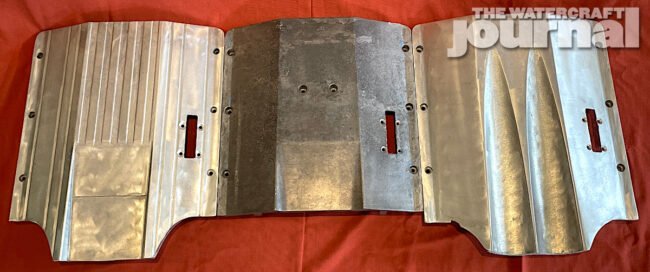
In tight turns the offshore plate performs even closer to the KS1 Race Spec plate, but when pushed hard will tend slide the rear out earlier than the latter. When held in a sharp, tight apex, the offshore plate tends to bury the nose more but not to the level of the OE plate.
In ocean swell, the KS2 plate comes into its own. The twin reverse strakes produce noticeable suction, pulling the ski down, gluing it to the water. Consequently, this action keeps the pump loaded with full thrust more consistently than either of the other plates. We did note that the KS2 plate does elicit a slightly harsher ride when attacking rolling swells at full throttle, but this is a very small cost to pay for the real benefit of more hookup and consequently, speed.
The KS2 ride plate may produce more drive offshore, but it does not break the laws of physics, so the machine will still become airborne over big swells when hit at speed. The suction of the offshore plate becomes more noticeable as speed increases, so if conditions allow full speed, the effect is maximized. Conversely, in large, chaotic windy swell where speed is limited, the relative superiority of the KS2 ride plate is reduced.
We were hard pressed to find any glaring negatives with either of the Kspeed ride plates. Both did slightly reduce the reversing abilities as they protrude into the reverse bucket area, but the difference is hardly noticeable. We noted that both plates replace the Kspeed Stage 1 kit’s need for the angled pump wedge, which helped lift the bow further out of the water, freeing up speed and wetted surface area – all good things.

So, if you regularly ride offshore or your typical usage is primarily aimed at maximizing speed in water that is not smooth, look at the KS2 Offshore plate. For everything else, the KS1 Race Spec plate is the way to go. It is not terribly far behind the KS2 plate in terms of high speed offshore use, and is a superior performer virtually everywhere else. If you’ve got an Ultra (2007-2021) go over to Kspeed Performance and check them out today!



